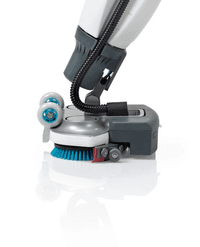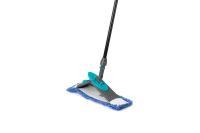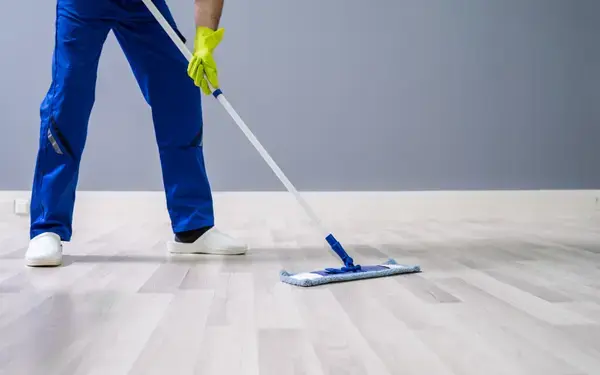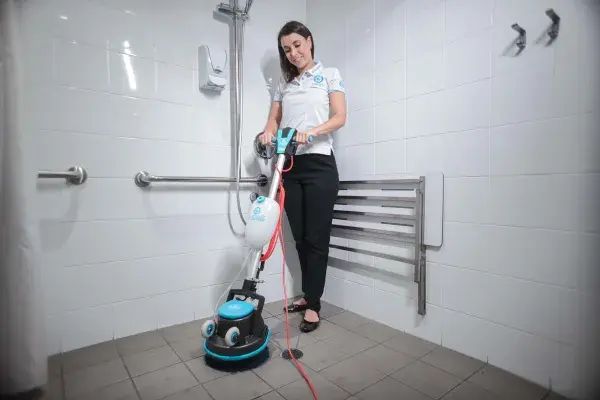You are reading: Seven Ways You Can Be Eco-Friendly & Reduce Environmental Impact When Cleaning
25 August 2022
5min read time
Brooke Payne
Seven Ways You Can Be Eco-Friendly & Reduce Environmental Impact When Cleaning
Share:
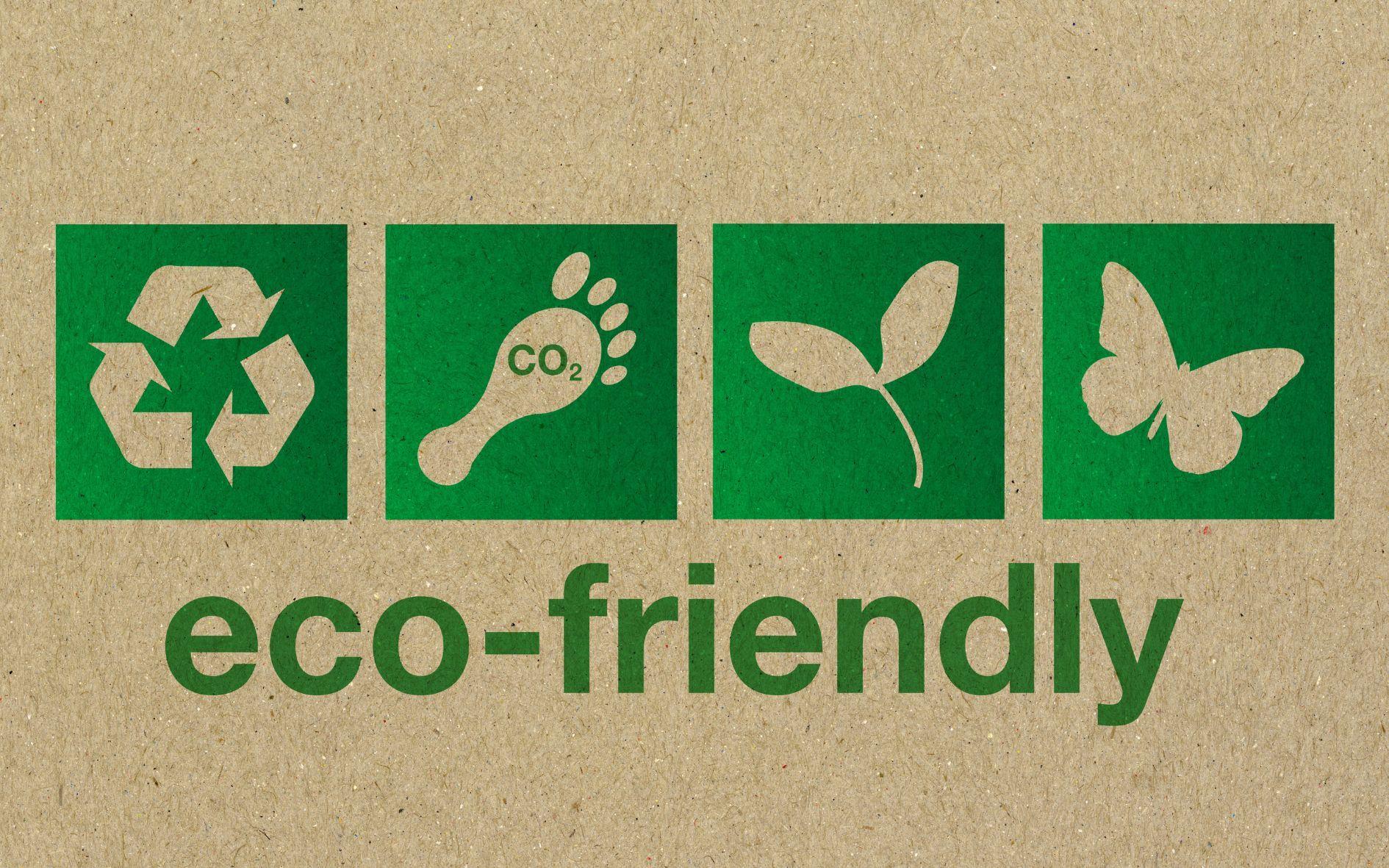
Key Insights
- We can be more eco friendly by reducing chemical and water usage
- Consider reusable microfiber products
- Utilise eco friendly chemicals and products where possible
Many businesses in Australia are looking for ways to clean more sustainably, and eco-friendly cleaning is a great way to do that. It doesn’t mean less effective cleaning either. By staying up to date with the latest green work practices and products, you can achieve superior commercial cleaning results while improving your bottom line.
Here's how Australian businesses can benefit.
Reduce chemical usage
Dilute chemicals accurately: Too much of a good thing is not always a good thing. Ensure chemicals are always diluted accurately and not overused. It’s easy to fall into the trap of thinking that you’d like your floors extra clean and pour a little extra into the mix. This often means that you end up with more chemical residue on your floor. Chemical residue is sticky and attracts dirt, which makes your floor dirtier, faster.
Use chemical dilution stations: Chemical dilution stations automatically mix the water and chemicals, ensuring that they will not be overused. A range of these products on the market, such as the Rubix solution dispenser, were explicitly created for convenience and avoided wastage.
Train your staff: Education is vital. Teach your team how much chemical product is required and why it’s important to be careful, and there’ll be far less chance of overuse.
Do you need chemicals? Consider how much you actually need to clean with chemicals. If you use a floor scrubber to clean, mechanical cleaning is sometimes enough, depending on how dirty your floors are. For example, when using the i-mop, you only need to use chemicals every second time.The superior scrubbing power of the i-mop is enough.
Choose a machine with a chemical dilution system. For example, the i-team i-dose has an innovative, built-in system that makes the cleaner’s job significantly easier. It provides the perfect amount of eco-friendly chemical solution, highly concentrated into one tiny, recyclable pod. Similar to a coffee pod, you pop the conveniently colour-coded pod into the injector and wait for the detergent to drop.
Reduce water usage in cleaning
Saving money on water usage will also significantly reduce your ecological footprint Our water consumption can harm both aquatic and terrestrial ecosystems. One of the best ways to reign in your water consumption is to stop mopping and use a floor scrubbing machine instead.
Mop and bucket cleaning is notorious for using (and wasting) enormous amounts of water. It’s also not a recommendable way of cleaning as it only removes 30-40% of dirt.
Using autoscrubbers in your commercial cleaning processes will dramatically reduce water usage, but not all autoscrubbers are created equally. Although they are an improvement on the traditional mop, some commercial scrubbers release water in the middle or front of the bristles. Consequently, some of this water can escape. The i-mop releases water from the centre of each brush. Then the bristles are carefully offset to capture the water within the body of the brush, minimising water loss.
The i-mop XL is incredibly conservative in its water usage, holding 4 L of water – enough to clean 400 m². Use a mop and bucket set, and you’d need to change the water at least every 200 m². This means you’d require 20 L of water to clean the same area. A better option would be to use a conventional walk-behind scrubber, but this will still use a good 8 to 10 L of water - a far cry from just 4 L. The i-mop is the best way to clean your floors.
3. Switch to microfibre cleaning tools
Microfibre is far superior to conventional cleaning cloths, and holds more dirt and soil, creating a cleaner environment. Good-quality microfibre requires fewer chemicals in the cleaning process and it lasts for longer. You can launder microfibre hundreds of times, and good-quality microfibre can last up to 700 washes.

Choose environmentally-friendly cleaning products & consumables
Where possible, use environmentally-friendly cleaning products. Look for enzyme or plant-based chemicals over fluorochemical based solutions. Also, look for products that have environmental certification, such as GECA.
When choosing toiletry and toilet paper products, look for the top two internationally-recognised environmental certifications - Forest Stewardship Council and PEFC(Programme for the Endorsement of Forest Certification). The best choice in paper certification is a paper that has a full LCA (Life-Cycle Analysis) completed, so you know the actual carbon impact of the toilet paper you use.
Also, consider looking for paper treated with enzymes that turn into carbon-positive toilet paper. For example, the Enviroplus Bioactive Toilet Paper contains natural organisms activated when the paper comes in contact with water. These microorganisms reproduce, multiplying the cleaning effect exponentially. Once they’ve completed their action, they biodegrade with no impact on the environment, reducing odours or blockages in sewage systems and pipes.
Compostable bin liners are a must if you want to care for your environment. While we’re on the subject, let’s become familiar with three important words:
- ‘Compostable’ is the word that should be on your radar, as it means the product will fully break down.
- ‘Biodegradable’ is good, but be a little wary – as it can just mean that the material will break down to smaller particles. Instead, look for ‘100% biodegradable’ which means the product will completely break down.
- ‘Degradable’ can be misleading: it’s neither compostable or biodegradable. It doesn’t completely dissolve in nature and will contaminate the environment with microplastics that end up in the food chain.
Reduce associated environmental impact
Consider the associated costs of cleaning your facility. Some facilities rely on regular outsourced services such as hygiene service vehicles or rental mats. These can have a surprisingly substantial environmental impact when you consider the carbon impact of the vehicles travelling to and from your facility.
Self-service options such as the i-matt are well worth exploring. You can clean them in place without the need for external help from service vehicles.
There are some very smart sanitary bin solutions available, too. Terracyclic, touted as “the world’s smartest sanitary disposal unit”, has considered the environment in every aspect of their units. Each environmentally friendly unit has an entirely disposable lid and liner cartridge system. This means there is no cleaning, less waste, and considerable savings on energy use and funds.
Read powerful tips for better cleaning: understanding pH and cleaning chemicals.

Deploy thorough eco-friendly staff training
Thorough staff training is essential – and you must address a range of issues for a successful outcome. Staff must be educated on how to reduce, reuse and recycle wherever possible.
Equipment maintenance is also vital as poorly maintained and handled equipment can soon become an expensive problem. Avoid issues by choosing easy-to-maintain equipment which will maximise a lifetime of your equipment and reduce environmental impact.
Be eco-friendly with procurement routines
There are several ways you can be more eco-friendly and avoid environmental impact with your procurement:
- Buy less frequently and in bulk
- Create a monthly procurement routine
- Train staff to adhere to these routines
By adhering to these procurement routines, you can not only help your bottom line, but also be far more efficient with purchasing, storing, invoices and overall administration.
Interested in the i-team cleaning suite? You can book your demo here.
Questions and Answers on Eco-Friendly Cleaning
1. How can I reduce the environmental impact of my cleaning products?
Answer: To minimize the environmental impact, choose cleaning products that are biodegradable, non-toxic, and free from harsh chemicals. Opt for products with eco-friendly certifications or make your own cleaners using ingredients like vinegar, baking soda, and lemon juice. This reduces harmful residues and helps protect waterways.
2. What are some ways to conserve water while cleaning?
Answer: To conserve water, use cleaning equipment that is designed to be water-efficient, such as floor scrubbers with adjustable water settings. When mopping, use only as much water as needed and change it less frequently to avoid waste. Additionally, consider using microfiber cloths and mops, which require less water and are highly effective.
3. How can I minimize waste during cleaning?
Answer: To reduce waste, use reusable cleaning cloths and mop heads instead of disposable ones. Ensure that cleaning tools are well-maintained to extend their lifespan. Additionally, recycle or properly dispose of any packaging or used cleaning product containers. Switching to concentrated cleaning solutions can also reduce packaging waste.
References
- Environmental Protection Agency (EPA) – Green Cleaning
- Green Seal – Eco-Friendly Cleaning Products
- The Guardian – How to Clean Your Home in an Environmentally Friendly Way
Products Featured Inside this Article
Media and Insights
Join the movement that's changing what clean means.
Be part of a cleaner world. Get a live demo at a time that suits you.
Book a Demo
